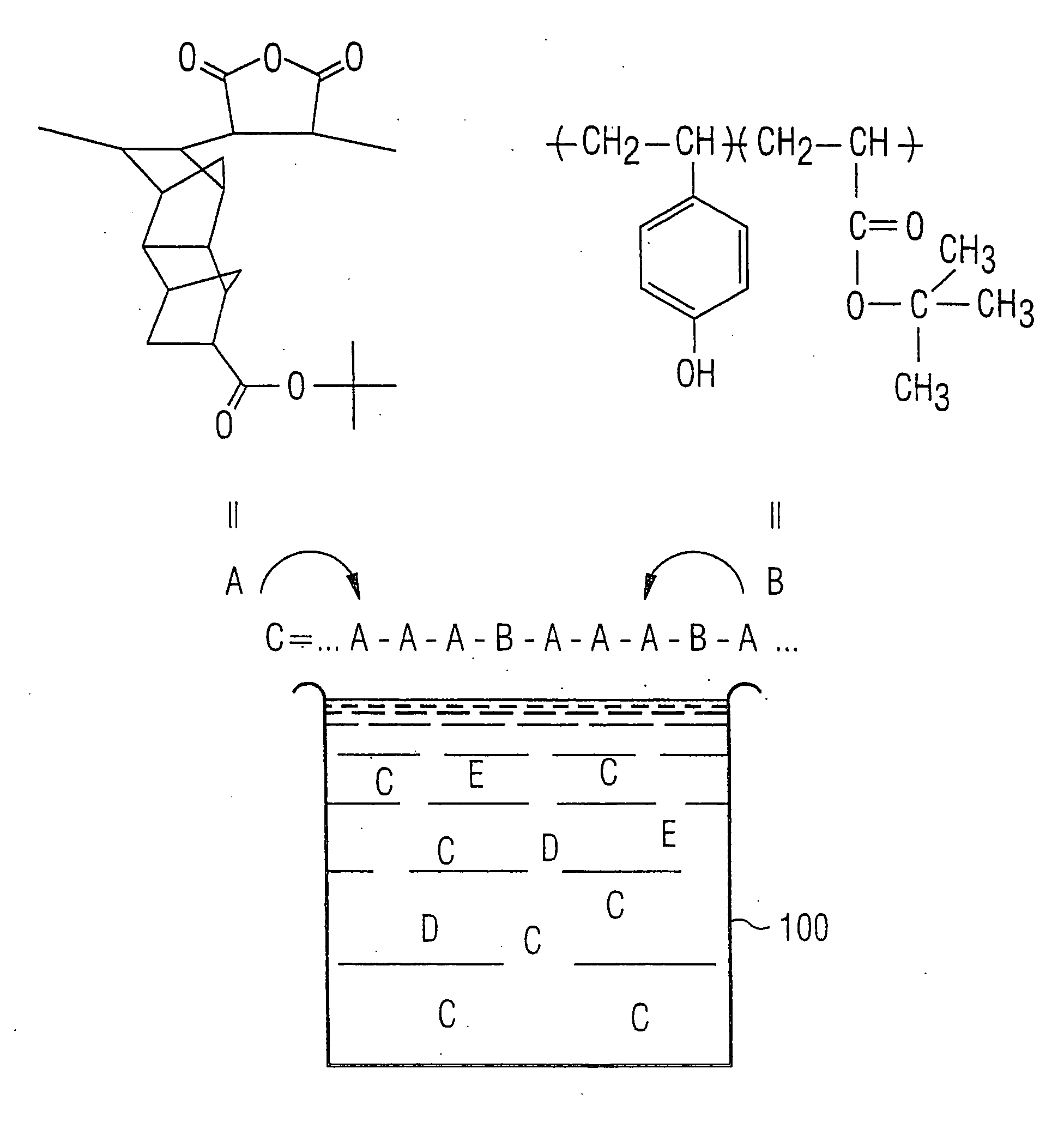Photosensitive lacquer for providing a coating on a semiconductor substrate or a mask
a technology of photosensitive lacquer and semiconductor substrate, which is applied in the direction of photosensitive materials, auxiliaries/base layers of photosensitive materials, instruments, etc., can solve the problems of insufficient sidewall passivation, limited wavelength range of resists used in photolithographic structuring, and rough edges leading to a particular extent of sidewall roughness, etc., to achieve the effect of improving quality
- Summary
- Abstract
- Description
- Claims
- Application Information
AI Technical Summary
Benefits of technology
Problems solved by technology
Method used
Image
Examples
Embodiment Construction
[0030] The FIGURE shows a photosensitive resist 100 with solvents E, acid generators D and with first base polymers which are synthesized as block copolymers C and comprise cycloaliphatic parent structures A, and second base polymers which comprise aromatic parent structures B. The fraction of the second base polymers containing aromatic parent structures B, based on all base polymers A, B, is 5 mol %. In this embodiment, the second base polymer having aromatic parent structures B comprises poly(4-hydroxystyrene), which is blocked by acid-sensitive tert-butoxycarbonyl groups.
[0031] The first base polymer having the cycloaliphatic parent structures A comprises an acid-sensitive blocking group, which in this case is a polymethacrylate. It also comprises an alkali-soluble unit of cycloolefinmaleic anhydride.
[0032] The resist is prepared with a polymer synthesis using the stated mole fractions of the base polymers. This resist is applied to a wafer in a coat thickness of 100-150 nm, p...
PUM
| Property | Measurement | Unit |
|---|---|---|
| thickness | aaaaa | aaaaa |
| thickness | aaaaa | aaaaa |
| wavelength | aaaaa | aaaaa |
Abstract
Description
Claims
Application Information
 Login to View More
Login to View More - R&D
- Intellectual Property
- Life Sciences
- Materials
- Tech Scout
- Unparalleled Data Quality
- Higher Quality Content
- 60% Fewer Hallucinations
Browse by: Latest US Patents, China's latest patents, Technical Efficacy Thesaurus, Application Domain, Technology Topic, Popular Technical Reports.
© 2025 PatSnap. All rights reserved.Legal|Privacy policy|Modern Slavery Act Transparency Statement|Sitemap|About US| Contact US: help@patsnap.com


